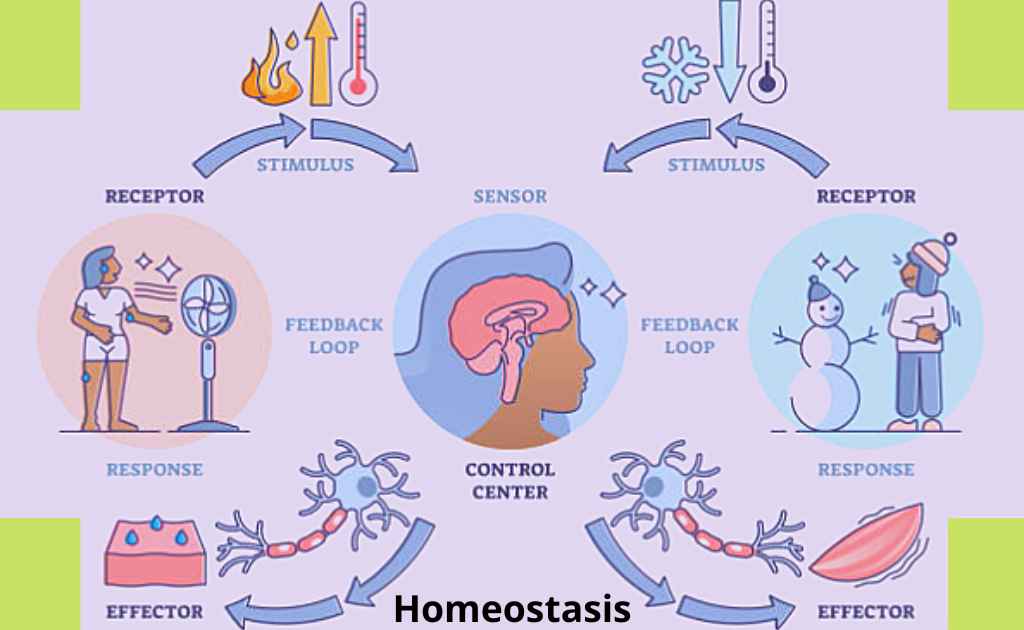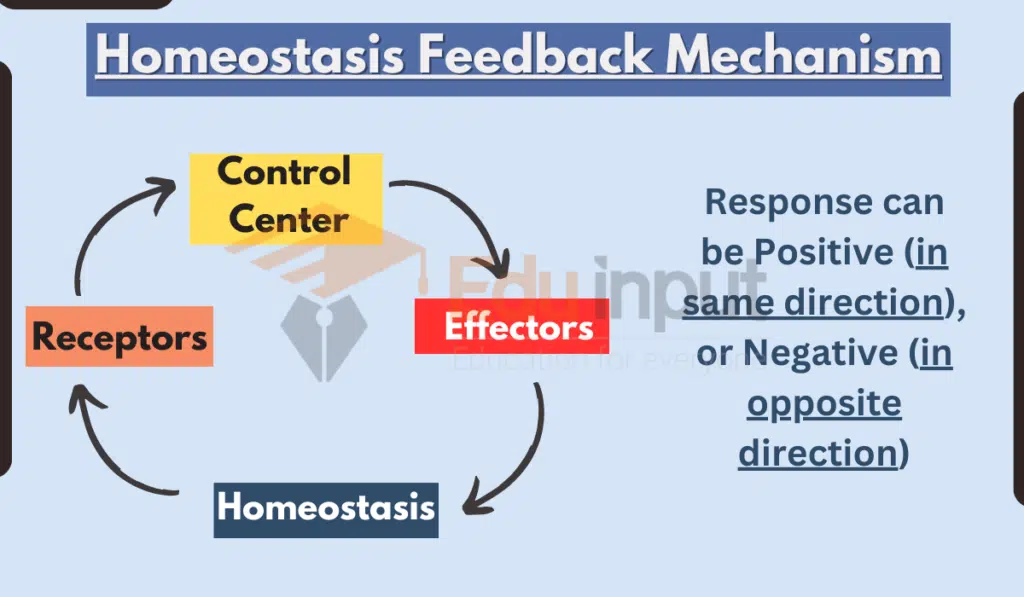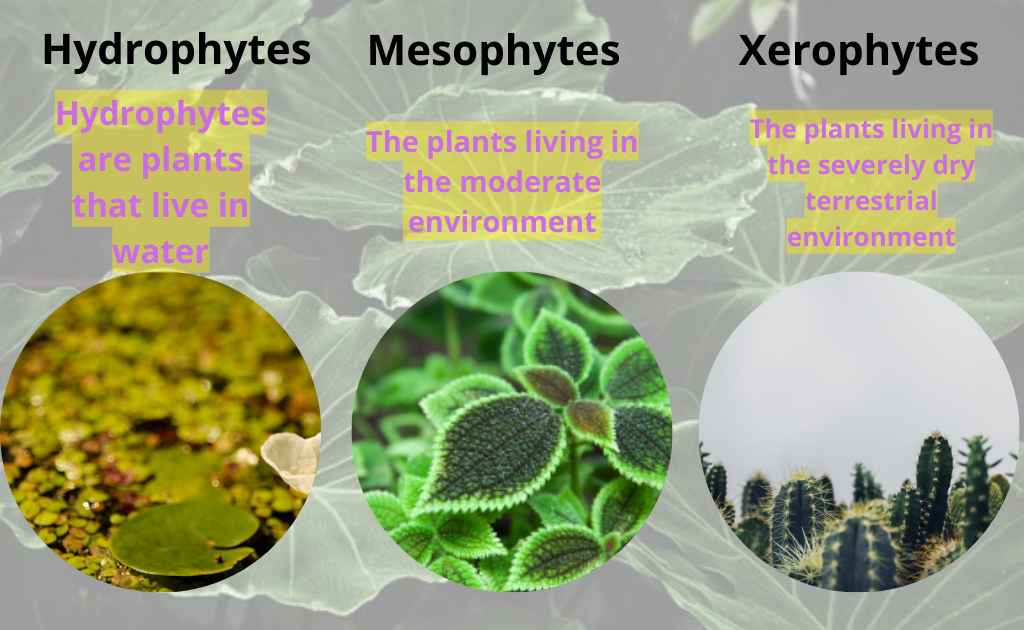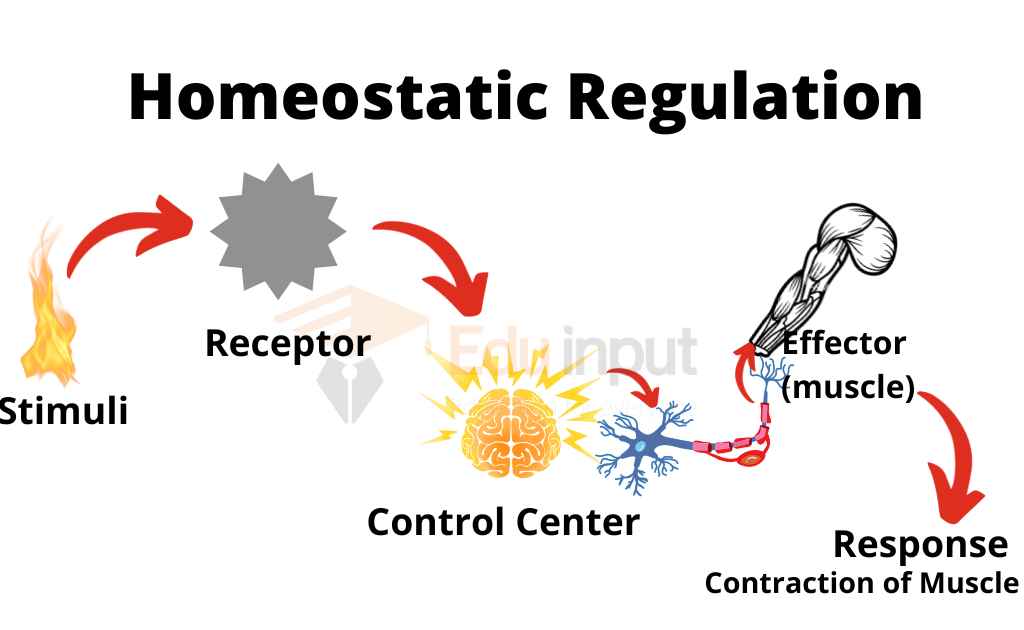Homeostasis – Definition, Examples & Feedback Mechanisms in Biology
What is Homeostasis?
Homeostasis is the process of protecting the internal environment from external fluctuations. The meaning of homeostasis in biology is maintaining stability within the body. The homeostasis definition refers to this balance. To define homeostasis simply, it ensures internal conditions remain steady or balanced.

Homeostasis In Anatomy
In anatomy, homeostasis is important because it ensures that the body’s cells and tissues have the conditions they need to function properly.
It helps regulate body temperature, water levels, and blood sugar. Examples of homeostasis include maintaining blood sugar levels and balancing water in the body.
Homeostasis In Physiology
In physiology, homeostasis is important because it allows the body to function properly. Without homeostasis, the body cannot regulate temperature, blood pressure, or glucose levels. Blood glucose homeostasis ensures stable sugar levels for energy.
Objectives of Homeostasis
The objectives of homeostasis are to:
- Maintain a stable internal environment within the body, despite changes in the external environment. This stability is essential for survival and proper function.
- Ensure that the body’s cells have the conditions they need to function. This includes balancing glucose and maintaining calcium homeostasis.
- Prevent the body from being damaged by environmental changes, such as extreme temperatures or dehydration.
- Allow the body to adapt to changes over time, ensuring homeostasis glucose levels, and water balance are regulated.
Homeostasis at Organism Level
At the organism level, homeostasis is the process of maintaining a stable internal environment within the body, even when external conditions change.
This level of homeostasis is achieved through the coordinated activity of systems such as the nervous system, endocrine system, cardiovascular system, and urinary system. These systems regulate critical processes like blood glucose homeostasis and thermoregulation.
Key Components of Internal Environment
The main components of the internal environment include:
- Water Balance and Osmoregulation
Osmoregulation maintains the balance of water and solutes, ensuring proper hydration and salt levels. The kidneys play a central role by filtering blood and excreting excess water and salts. Calcium homeostasis and iron homeostasis are closely related to these processes. - Excretion
Excretion eliminates waste products, including nitrogenous wastes like urea and creatinine. Salt and water are also removed to maintain homeostasis. Proper excretion supports blood sugar levels homeostasis and keeps the body free from harmful toxins. - Thermoregulation
Thermoregulation ensures internal body temperature stays within a tolerable range. The hypothalamus plays a key role by balancing heat production and heat loss, essential for homeostasis of glucose levels and energy production.
Homeostasis enables processes like osmoregulation and thermoregulation to work together to protect the body, regulate blood sugar, and maintain a stable environment.
Homeostasis at Cellular Level
The cellular level of homeostasis refers to maintaining a stable internal environment within cells, despite changes in the extracellular environment. This is a key example of homeostasis in biology.
Processes Involved in Cellular Homeostasis
This level of homeostasis is achieved through the coordinated activity of several cellular processes:
- Osmosis: Movement of water across a semipermeable membrane to maintain water balance, an important aspect of homeostasis.
- Diffusion: Movement of molecules from high to low concentration helps maintain cellular equilibrium.
- Active Transport: Movement of molecules against a concentration gradient, requiring energy, which plays a role in homeostasis of glucose levels and calcium homeostasis.
- Exocytosis: The release of molecules from the cell, contributing to the maintenance of blood glucose homeostasis.
- Endocytosis: Uptake of molecules into the cell, assisting in glucose and homeostasis.
Homeostasis Feedback Mechanism
A feedback mechanism is a process in which a system responds to changes in its environment by adjusting its output. In the context of homeostasis and response, feedback mechanisms help maintain a stable internal environment, ensuring that processes like homeostasis of calcium and homeostasis of glucose levels remain balanced.

Positive Feedback in Homeostasis
Positive feedback is a type of feedback mechanism where the output of a system increases the input to that system. This can lead to a runaway effect, where the system’s output continues to increase until it reaches a limit. Positive feedback in homeostasis is often involved in processes that need to be amplified, such as childbirth.
Examples of Positive Feedback in Homeostasis
Here are a few examples of homeostasis using positive feedback:
- Blood clotting: When a blood vessel is damaged, platelets release chemicals that trigger the clotting cascade. The clotting cascade forms a clot, which helps to stop the bleeding. This is an example of positive feedback homeostasis because it amplifies the initial change in the system (the damage to the blood vessel).
- Muscle contraction: When a muscle contracts, it releases calcium ions. These calcium ions bind to receptors on the muscle fibers, which causes the fibers to contract even more. This is an example of positive homeostasis feedback because it amplifies the initial change in the system (the contraction of the muscle).
Negative Feedback in Homeostasis
Negative feedback is a type of feedback mechanism in which the output of a system decreases the input to that system. Negative feedback helps maintain equilibrium in the system. It is the most common type of feedback mechanism in homeostasis and negative feedback processes.
Examples of Negative Feedback in Homeostasis
Here are a few examples of homeostasis through negative feedback:
- Temperature regulation: When the body’s temperature rises, the hypothalamus triggers mechanisms to cool the body down. These mechanisms include sweating and vasodilation (the widening of blood vessels). Sweating and vasodilation help lower the body’s temperature and return it to its set point. This is an example of negative feedback homeostasis because the body tries to bring the temperature back to its set point.
- Blood sugar regulation: When blood sugar levels homeostasis is disrupted and blood sugar rises, the pancreas releases insulin. Insulin helps move glucose into cells, lowering blood sugar levels. This is an example of homeostasis of blood sugar as the release of insulin helps to bring blood sugar levels back to their set point, which is an example of negative feedback loop homeostasis.
These feedback mechanisms are critical for maintaining homeostasis glucose levels and ensuring that systems like calcium homeostasis and iron homeostasis stay balanced. The body’s ability to maintain these processes is essential for survival, highlighting why homeostasis is important for health and functioning.
Importance of Homeostasis
The purpose of homeostasis is to maintain a stable internal environment within the body, despite changes in the external environment. This is essential for survival, as even small changes in the body’s environment can have a significant impact on its function. Homeostatic imbalance can lead to various diseases in humans.
Here are some of the important purposes of homeostasis:
- Homeostasis is important in maintaining a constant body temperature. Homeostasis helps regulate body temperature by sweating when it gets too hot and shivering when it gets too cold. This is an example of how the body responds to temperature changes through negative feedback homeostasis, ensuring temperature stability.
- Homeostasis is also important in maintaining a constant blood sugar level. Homeostasis of blood sugar is regulated by hormones like insulin and glucagon. When blood glucose levels rise, insulin is released to lower it, and when blood sugar is too low, glucagon helps raise it. This is an example of blood glucose homeostasis or homeostasis of glucose levels.
- Homeostasis helps in maintaining a constant blood pH. The kidneys and lungs play crucial roles in regulating blood pH, ensuring that the body’s acid-base balance is stable. This process involves homeostasis and negative feedback mechanisms that help the body stay within optimal pH levels.
- Homeostasis is involved in maintaining constant water balance. The kidneys and sweat glands help regulate water balance in the body by controlling fluid retention and excretion. This helps prevent dehydration or overhydration, contributing to overall homeostasis and response to environmental changes.
- Homeostasis also helps in maintaining a constant salt balance. The kidneys and sweat glands help regulate salt levels, ensuring the body’s electrolyte balance remains stable. This regulation is essential for proper cellular function and is a part of calcium homeostasis and iron homeostasis.
Examples of Homeostasis
Here are some examples of homeostasis:
- Temperature regulation
- Blood sugar regulation
- Water balance
- Electrolyte balance
- pH balance
- Blood pressure regulation
- Respiration
- Immunity
- Digestion
- Metabolism
Frequently Asked Questions – FAQs
What are examples of homeostasis?
Maintenance of Temperature in the animal body
Maintenance of Blood Glucose Level
Water and salt balance in the animal body
Why is homeostasis important?
Homeostasis is important to maintain the internal environment despite the changes that are happening in the internal and external environment. It helps to maintain optimal conditions for enzyme action.
How is homeostasis maintained?
Homeostasis is maintained through a series of control mechanisms being controlled at cellular, tissue, and organ level.
What will happen if homeostasis is not maintained properly?
Homeostasis helps to maintain body temperature, water, and salt balance and prevents the accumulation of waste materials. If it is not maintained properly, it can cause an increase in body temperature which may disrupt enzyme functioning. Similarly, an imbalance of salt and water can lead to fatal diseases.
why is sweating an example of homeostasis?
Sweating is an example of homeostasis because it helps the body maintain a stable internal temperature. When our body temperature rises, sweating helps to cool us down by evaporating from the skin. This process absorbs heat from the body, which helps to lower the temperature.






Leave a Reply